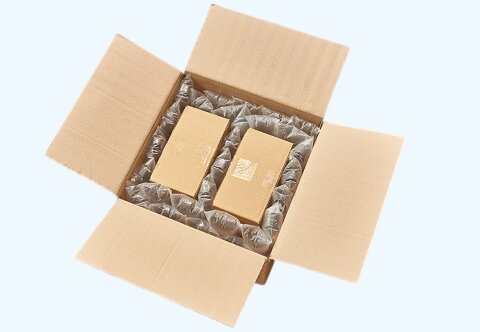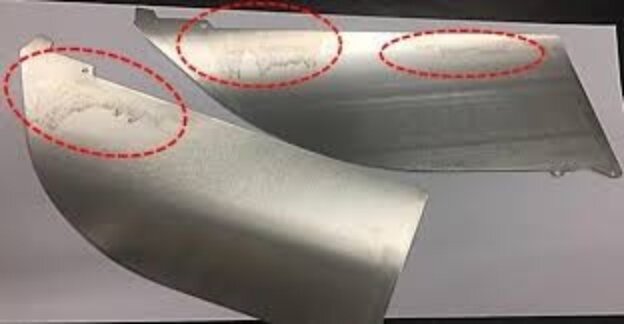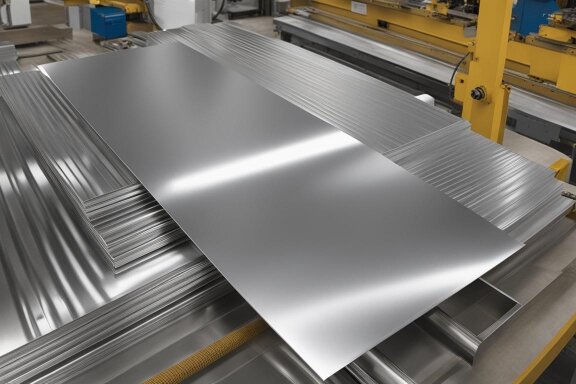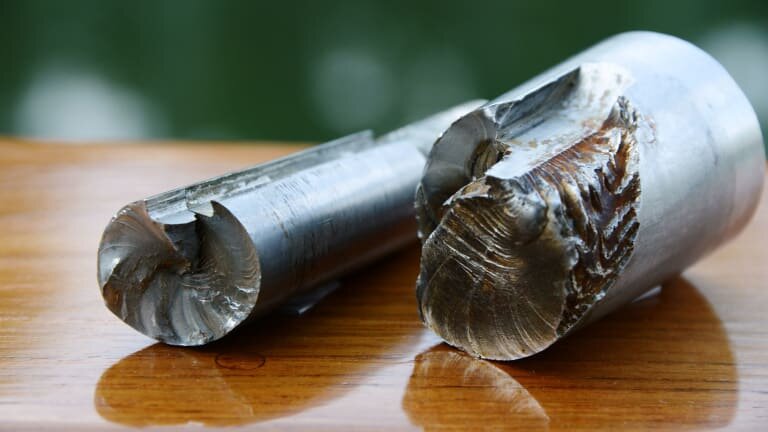Nella fabbricazione dei metalli, il taglio e la piegatura sono spesso oggetto di grande attenzione. Ma ciò che determina la resistenza e l'aspetto di un pezzo viene dopo queste fasi: la finitura. Un trattamento superficiale adeguato può trasformare un pezzo normale in uno che resiste alla ruggine, all'usura e agli effetti di anni di utilizzo. Senza di esso, anche i componenti ben fatti possono guastarsi prematuramente.
La finitura e il rivestimento della lamiera proteggono i pezzi dagli ambienti più difficili. Aumentano le prestazioni, migliorano l'aspetto e mantengono l'affidabilità dei pezzi nel tempo. Sia che si tratti di progettare pezzi, acquistare componenti o gestire la produzione, la scelta della giusta finitura può avere un impatto significativo sulla durata e sulla qualità.
Questo articolo esamina diversi metodi di finitura e rivestimento standard, tra cui la verniciatura a polvere, l'anodizzazione, la galvanica e la passivazione. Ogni metodo ha i suoi vantaggi. Comprendendo come le diverse finiture influenzano la forza, la resistenza alla corrosione e l'aspetto, è possibile fare scelte più consapevoli che migliorano le prestazioni e la durata del prodotto.
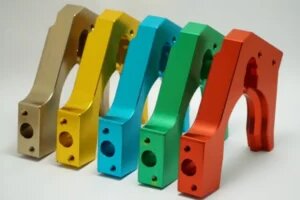
Che cos'è la finitura della lamiera?
La finitura della lamiera è la fase finale della fabbricazione che migliora l'aspetto, la resistenza e le prestazioni di un pezzo. Utilizza metodi meccanici, chimici o elettrochimici per trattare la superficie del metallo. Questi processi rimuovono i difetti minori, levigano le aree ruvide e preparano le parti per i rivestimenti o le vernici. La finitura aggiunge anche uno strato protettivo che aiuta a prevenire ruggine, corrosione e usura superficiale.
Una buona finitura può trasformare il metallo nudo in un pezzo pronto per l'uso a lungo termine. Può bloccare l'ossidazione in condizioni di umidità o all'aperto e ridurre l'attrito tra le parti in movimento. Inoltre, le finiture rendono i pezzi più facili da pulire e li aiutano a mantenere il loro aspetto più a lungo.
Tipi comuni di finitura della lamiera
Ogni metodo di finitura ha i suoi punti di forza, a seconda della funzione e dell'ambiente di lavoro del pezzo. Di seguito sono riportate alcune delle finiture più diffuse ed efficaci utilizzate per i pezzi in lamiera.
Granigliatura
Granigliatura utilizza delicate sfere di vetro e aria compressa per pulire e levigare le superfici metalliche. Questo processo rimuove la ruggine, l'ossidazione e i segni di lavorazione, mantenendo le dimensioni precise del pezzo. Crea una superficie opaca o satinata con una rugosità di circa Ra 1,0-3,0 μm, che la rende una base adatta per un successivo rivestimento o verniciatura.
Viene spesso utilizzata su acciaio inossidabile, alluminio e acciaio dolce. La granigliatura migliora l'adesione del rivestimento e conferisce ai pezzi un aspetto pulito e uniforme che nasconde le piccole imperfezioni superficiali. È una scelta eccellente quando sono richiesti un aspetto uniforme e una struttura fine.
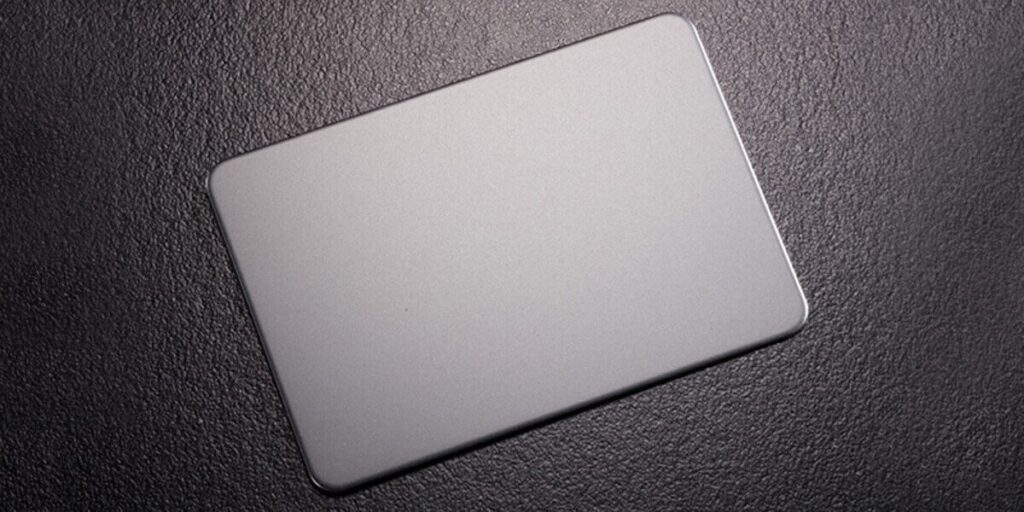
Rivestimento in polvere
Rivestimento in polvere prevede lo spruzzo di particelle di polvere cariche su una superficie metallica rettificata, quindi la polimerizzazione in un forno a 180-200°C. La polvere fusa forma una pellicola continua e resistente di spessore compreso tra 60 e 120 μm.
Questo rivestimento offre un'eccellente protezione contro la corrosione, gli urti e i danni causati dai raggi UV, rendendolo adatto sia per applicazioni interne che esterne. Le parti verniciate a polvere mantengono il loro colore e la loro lucentezza per anni, mostrando uno sbiadimento o un distacco minimi. Con un'infinità di colori e texture tra cui scegliere, questa finitura è ampiamente utilizzata per involucri, mobili e parti di macchinari che necessitano di resistenza e fascino visivo.
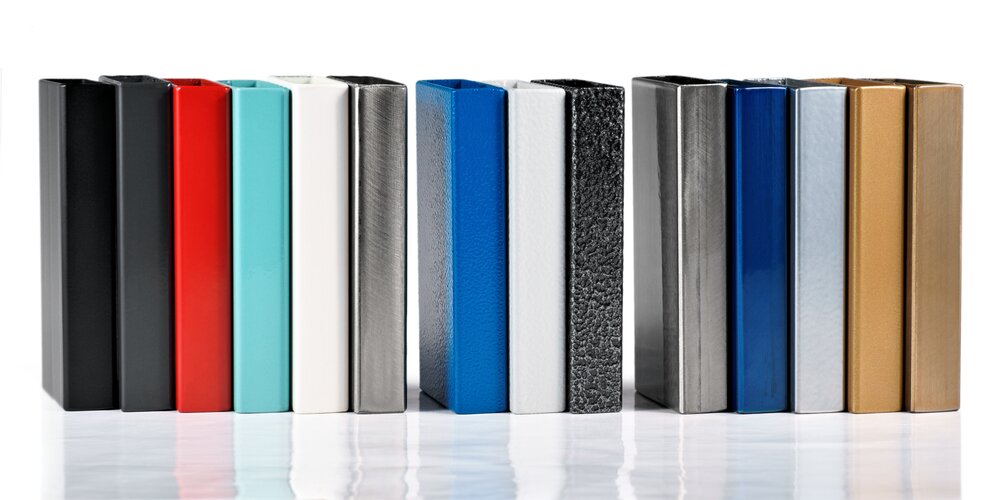
Pittura
Pittura aggiunge un sottile strato di 30-50 μm di vernice liquida per proteggere il metallo e aggiungere colore. La superficie viene pulita e talvolta trattata con uno strato di fosfati per migliorare l'adesione della vernice. I pezzi vengono poi cotti a 120-150°C per polimerizzare la vernice e aumentarne la durata.
Le vernici vengono utilizzate per scopi diversi:
- Vernice epossidica offre una forte resistenza chimica ed è adatto alle macchine industriali.
- Vernice acrilica Si asciuga rapidamente e funziona bene per mobili o espositori da interno.
- Vernice poliuretanica resiste alla luce del sole e alla pioggia, risultando ideale per le applicazioni esterne.
La verniciatura è flessibile in termini di opzioni di colore e finitura ed è conveniente per prototipi o piccoli lotti. Pur non essendo resistente come la verniciatura a polvere, offre una superficie attraente e facile da pulire, con una solida protezione dagli agenti atmosferici.
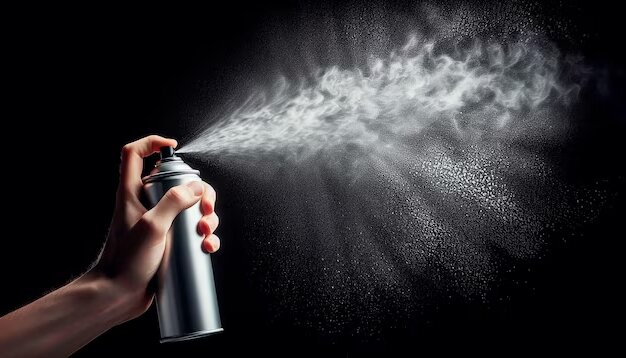
Galvanotecnica
Galvanotecnica utilizza una corrente elettrica per rivestire un pezzo con un sottile strato di un altro metallo, come zinco, nichel o cromo. Il rivestimento ha solitamente uno spessore di 2-25 μm.
- Zincatura garantisce resistenza alla corrosione e un aspetto argentato e brillante.
- Placcatura al nichel aggiunge durezza e resistenza all'usura.
- Cromatura offre una finitura a specchio con un'elevata durata.
I componenti galvanici sono comunemente utilizzati nei prodotti automobilistici, elettronici e decorativi, dove l'aspetto e le prestazioni sono essenziali.
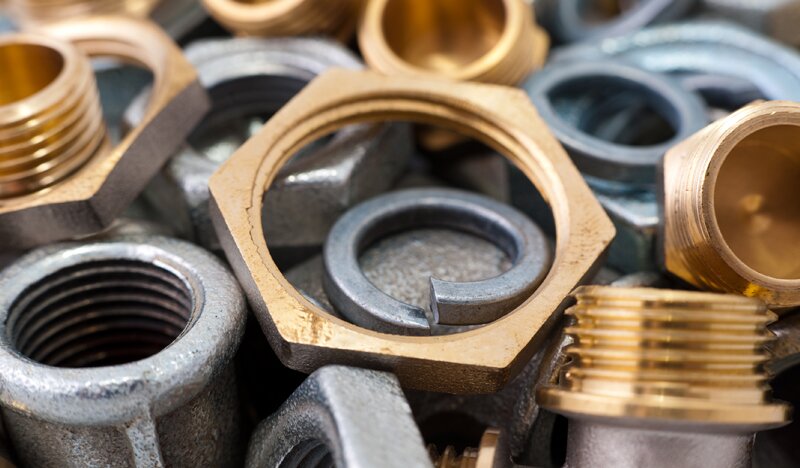
Anodizzazione
Anodizzazione è utilizzato principalmente sull'alluminio per migliorare la resistenza alla corrosione e la durezza superficiale. Il pezzo di alluminio viene posto in un bagno di acido e una corrente elettrica forma uno strato di ossido strettamente legato dello spessore di 10-100 μm.
L'alluminio anodizzato può essere tinto in una varietà di colori. Poiché il colorante viene assorbito dallo strato di ossido, non si scheggia né si stacca. Successivamente, la superficie viene sigillata in acqua calda per chiudere i pori e fissare il colore.
- Anodizzazione di tipo II (acido solforico) è comune per l'uso da parte dei consumatori e dell'architettura.
- Anodizzazione di tipo III, nota anche come anodizzazione dura, crea uno strato più spesso e più duro per i componenti aerospaziali e industriali.
Le parti anodizzate offrono anche un forte isolamento elettrico, rendendole adatte per alloggiamenti, dissipatori di calore e componenti elettronici.

Passivazione e film chimico
La passivazione aumenta la resistenza alla corrosione dell'acciaio inossidabile rimuovendo il ferro libero e le impurità dalla superficie. Forma una sottile e invisibile pellicola di ossido senza modificare l'aspetto del pezzo.
Per l'alluminio, una pellicola di rivestimento chimico, come la conversione del cromato, offre una protezione simile. Questi rivestimenti sono fragili, in genere di dimensioni inferiori a un μm, e mantengono la conduttività elettrica resistendo all'ossidazione. Entrambi i trattamenti sono comunemente utilizzati nelle custodie e negli assemblaggi elettrici dove la conduttività e la resistenza alla corrosione sono essenziali.
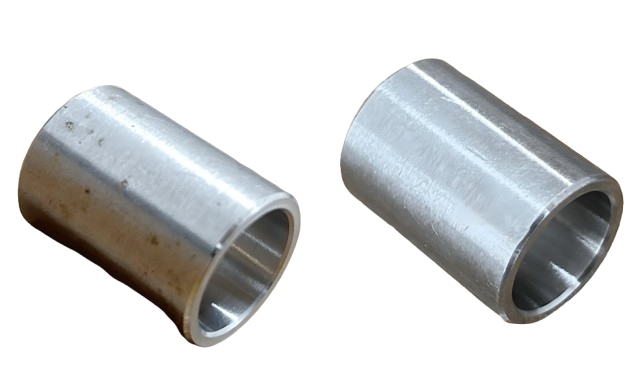
Rivestimento elettronico
Rivestimento elettronico, noto anche come rivestimento elettroforeticoapplica la vernice in modo uniforme grazie a un campo elettrico. Il pezzo viene immerso in un bagno di vernice a base d'acqua, caricato e quindi cotto a 160-190°C. Il rivestimento finale ha uno spessore tipico di 20-35 μm e copre anche forme complesse e angoli stretti.
L'e-coating offre finiture lisce e lucide con un'eccellente resistenza alla corrosione. È ampiamente utilizzato nella produzione automobilistica e di elettrodomestici perché offre una copertura uniforme, una forte adesione e una resistenza alle scheggiature e allo sbiadimento.
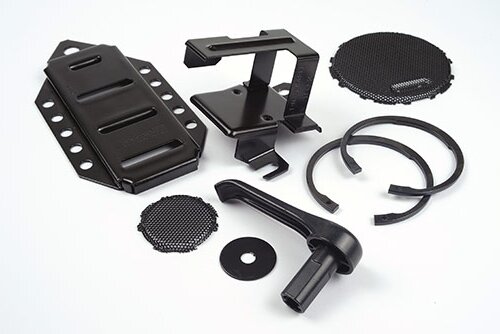
Anneritura a caldo
Anneritura a caldo, detta anche rivestimento di ossido neroforma un sottile strato nero su acciaio o ferro. I pezzi vengono immersi in una serie di bagni chimici riscaldati che creano uno strato di ossido spesso circa 1 μm.
Questa finitura offre una leggera protezione dalla corrosione, riduce i riflessi e conferisce un aspetto uniformemente scuro. È comunemente utilizzata per utensili, elementi di fissaggio e parti di precisione che richiedono un aspetto pulito e professionale, pur mantenendo dimensioni ridotte.
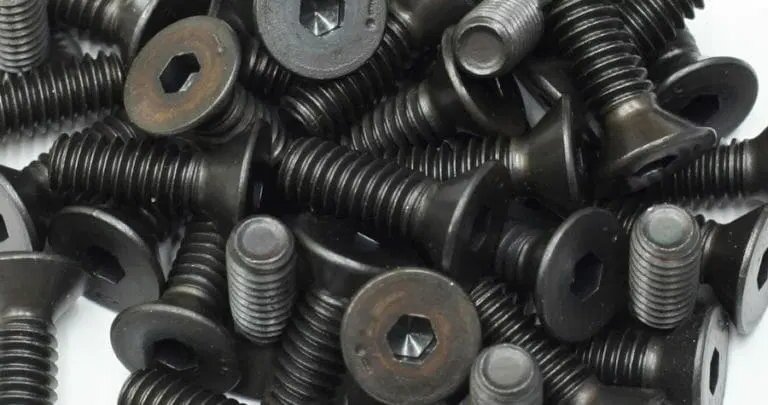
Come la finitura delle lamiere migliora le prestazioni?
Finitura della superficie non si limita a dare un bell'aspetto ai pezzi, ma ha un effetto diretto sulle loro prestazioni e sulla loro durata. Ogni tipo di trattamento superficiale svolge un ruolo cruciale nella protezione del pezzo e nella riduzione dei costi a lungo termine.
Resistenza alla corrosione e all'usura
Le parti metalliche devono spesso affrontare condizioni difficili, come umidità, sostanze chimiche o attrito. Senza un'adeguata finitura, questi fattori possono causare ruggine, ossidazione o usura superficiale. Finiture come la verniciatura a polvere, l'anodizzazione e la galvanica creano uno strato protettivo che previene questi problemi. Ad esempio, un involucro in acciaio verniciato a polvere può resistere per anni alle intemperie esterne, mentre l'alluminio anodizzato rimane stabile in ambienti umidi o marini.
Le finiture proteggono anche dall'usura meccanica dovuta a contatti o movimenti ripetuti. L'anodizzazione dura e la nichelatura rendono le superfici più complesse e più resistenti a graffi e abrasioni. Riducendo la corrosione e l'usura, la finitura superficiale contribuisce a prolungare la vita del pezzo e a ridurre i costi di manutenzione: un vantaggio fondamentale sia nella produzione che nell'uso quotidiano.
Vantaggi estetici e di branding
Una finitura di qualità conferisce al prodotto un aspetto professionale e di alto valore. Rivestimenti lisci e uniformi aiutano i pezzi a sembrare precisi e durevoli, rafforzando la fiducia dei clienti nel marchio. Le finiture, come il rivestimento in polvere e la verniciatura, sono disponibili in un'ampia gamma di colori e texture, offrendo alle aziende la flessibilità necessaria per soddisfare i propri obiettivi di branding e design.
Per i prodotti di consumo, l'aspetto e la sensazione sono importanti quanto la funzione. Una superficie satinata o una vernice in polvere lucida trasmettono qualità e attenzione ai dettagli. Oltre all'aspetto, le finiture prevengono anche lo sbiadimento e lo scolorimento, aiutando i prodotti a mantenere un aspetto pulito nel tempo.
Prestazioni elettriche e termiche
Alcune finiture migliorano la capacità di un pezzo di gestire l'elettricità o il calore. La galvanizzazione del nichel o del rame aumenta la conduttività elettrica, rendendola ideale per l'uso in terminali, connettori e componenti elettronici. D'altra parte, l'alluminio anodizzato fornisce un isolamento nei punti in cui i componenti devono bloccare il flusso di corrente, come gli alloggiamenti o i dissipatori di calore.
Le finiture possono anche migliorare il trasferimento di calore. I rivestimenti protettivi che riducono l'ossidazione mantengono stabili le prestazioni termiche, soprattutto in componenti come gli alimentatori o i moduli LED. La scelta della finitura giusta in base alle esigenze elettriche o termiche garantisce il funzionamento sicuro ed efficiente del componente in condizioni reali.
Come scegliere la giusta finitura della lamiera?
Ogni pezzo ha esigenze diverse in termini di prestazioni e la finitura migliore dipende da dove e come verrà utilizzato. La scelta giusta migliora sia la funzione che l'aspetto. Ecco i punti principali da considerare quando si sceglie una finitura.
Come si abbina la finitura al materiale?
Metalli diversi rispondono in modo diverso ai metodi di finitura. Il materiale di base determina i trattamenti che si legano bene e garantiscono una protezione duratura.
L'alluminio funziona meglio con l'anodizzazione, che aumenta la durezza e offre una gamma di opzioni di colore. Si abbina bene anche alla verniciatura a polvere o alla verniciatura quando è necessaria una maggiore resistenza alla corrosione o una decorazione.
L'acciaio inossidabile trae i maggiori benefici dalla passivazione e dalla sabbiatura, che puliscono e proteggono senza ridurre la sua naturale resistenza alla corrosione. Per ottenere un aspetto più scuro o lucido, si può ricorrere alla verniciatura a E o all'elettrolucidatura.
L'acciaio dolce ha bisogno di una protezione più forte perché arrugginisce facilmente. La zincatura, il rivestimento a polvere e la verniciatura sono scelte comuni per formare una solida barriera contro l'umidità e l'ossidazione.
Il rame e l'ottone sono spesso utilizzati con rivestimenti trasparenti o nichelatura per evitare l'appannamento e mantenere il loro colore metallico. Poiché ogni metallo reagisce in modo diverso all'ambiente circostante, la scelta di una finitura compatibile garantisce prestazioni durature e un aspetto attraente.
| Finitura | Acciaio al carbonio | Acciaio inox | Alluminio | Leghe di rame | Acciaio galvanizzato |
|---|---|---|---|---|---|
| Ossido nero | Adatto per utensili, attrezzature e dispositivi di fissaggio; aggiunge una leggera resistenza alla corrosione. | Non è tipicamente utilizzato. | Non adatto. | Non adatto. | Non adatto. |
| Galvanotecnica | Utilizzato per rivestimenti di zinco, nichel o cromo per migliorare l'aspetto e la protezione dalla corrosione. | Di solito non è necessario grazie alla naturale resistenza alla corrosione. | Non comunemente utilizzato. | Spesso utilizzato per le finiture decorative o protettive di nichel e cromo. | Non è raccomandato. |
| Anodizzazione | Non adatto. | Non adatto. | Comune per le parti in alluminio; migliora la resistenza all'usura e la stabilità del colore. | Non adatto. | Non adatto. |
| Pittura | Finitura comune e a basso costo; aggiunge protezione dalla corrosione e dagli agenti atmosferici. | Funziona come strato barriera aggiuntivo; colori personalizzabili. | Finitura flessibile per prototipi e prodotti di consumo. | Resiste al colore e all'appannamento. | Spesso utilizzato per parti esterne che necessitano di uniformità visiva. |
| Rivestimento in polvere | Fornisce un rivestimento durevole e resistente agli urti; viene utilizzato per macchinari e parti esterne. | Ideale per le applicazioni industriali che richiedono durata ed estetica. | Finitura decorativa popolare con forte protezione dalla corrosione. | Applicato per una protezione del colore di lunga durata. | Migliora la resistenza alla corrosione delle parti pre-rivestite. |
| Passivazione | Non applicabile. | Migliora la resistenza alla corrosione e la stabilità superficiale. | Non adatto. | Non adatto. | Non adatto. |
| Lucidatura | Aumenta la levigatezza della superficie e ne migliora l'aspetto. | Produce una finitura a specchio o spazzolata. | Migliora la riflettività e la scorrevolezza. | Utilizzato per migliorare la decorazione. | Migliora l'aspetto e la pulizia della superficie. |
| Sabbiatura | Pulisce l'ossidazione e prepara le superfici per il rivestimento. | Rimuove le incrostazioni e migliora l'adesione della superficie. | Crea una texture opaca uniforme. | Si usa per pulire e texturizzare prima della finitura. | Prepara la superficie per la verniciatura o il rivestimento in polvere. |
Qual è l'ambiente operativo della parte?
L'ambiente ha un impatto significativo sulla durata di vita di un pesce. Le parti utilizzate in ambienti umidi, salati o ricchi di sostanze chimiche richiedono un'elevata resistenza alla corrosione. La verniciatura a polvere e l'anodizzazione sono adatte per applicazioni all'esterno o in prossimità dell'acqua. Per le applicazioni in ambienti interni, la galvanoplastica o la passivazione offrono in genere una protezione sufficiente.
Quando i componenti sono esposti al calore, all'attrito o al contatto con altri componenti, è bene scegliere finiture in grado di resistere all'usura meccanica. Per le apparecchiature mediche o alimentari, l'ideale sono le finiture lisce e pulibili, come l'acciaio inox lucido o l'alluminio anodizzato.
Quali sono le vostre esigenze di prestazioni?
Ogni finitura offre diversi vantaggi meccanici e funzionali. Per la resistenza all'abrasione, utilizzare l'anodizzazione dura o la nichelatura. Per la conducibilità elettrica, scegliete la zincatura o il rivestimento con film chimico, che mantiene un buon contatto tra le superfici metalliche.
Se l'obiettivo è la coerenza visiva, l'E-coating e la verniciatura a polvere garantiscono colore e lucentezza uniformi. Le parti in movimento beneficiano di superfici più lisce che riducono l'attrito e prevengono l'usura prematura. L'abbinamento della finitura allo scopo del pezzo aiuta a mantenere le prestazioni e l'affidabilità nel tempo.
Quali sono i vostri vincoli di budget e di tempistica?
Spesso sono i costi e le tempistiche a guidare le scelte di finitura. La verniciatura a spruzzo e la sabbiatura sono economiche e veloci, quindi adatte a prototipi o a piccole produzioni. La verniciatura a polvere e la verniciatura a E richiedono tempi di preparazione più lunghi, ma sono più efficienti per la produzione di massa.
Se il tempo a disposizione è limitato, scegliete finiture con tempi di indurimento o di asciugatura brevi. Per un risparmio a lungo termine, investire in finiture durevoli può ridurre i futuri costi di manutenzione e sostituzione.
Quale look volete ottenere?
La finitura superficiale definisce l'aspetto e la sensazione del prodotto. Una finitura opaca o spazzolata conferisce uno stile industriale, mentre la cromatura o la verniciatura a polvere lucida creano un look moderno e di alto livello.
Colore, lucentezza e consistenza influenzano la percezione della qualità da parte dei clienti. I progettisti spesso scelgono finiture che si adattano all'immagine del loro marchio, trovando un equilibrio tra prestazioni e costi.
Capacità di finitura e rivestimento di Shengen
Shengen supporta i progetti dal prototipo alla produzione. Offriamo una serie completa di servizi di finitura e rivestimento. Ci concentriamo su una qualità stabile e tempi di consegna rapidi.
Eseguiamo diversi opzioni di finitura in-house per mantenere il controllo e la velocità:
- Rivestimento in polvere: Offriamo una varietà di texture e livelli di lucentezza. Il rivestimento aderisce bene e dura all'esterno. È adatto a involucri, telai e parti strutturali.
- Pittura: I colori si adattano rapidamente ai prototipi e alle piccole tirature. La finitura appare liscia e pulita.
- Granigliatura e sabbiatura: Puliamo e levighiamo la superficie prima del rivestimento. La texture opaca aiuta la vernice o la polvere ad aderire meglio.
- Lucidatura e spazzolatura: Miglioriamo l'aspetto, eliminiamo i graffi sottili e otteniamo una finitura satinata o a specchio.
Collaboriamo anche con negozi di fiducia per il trattamento delle superfici per esigenze particolari:
- Anodizzazione (tipi II e III): Miglioriamo l'alluminio con una maggiore resistenza all'usura e alla corrosione. Offriamo colori trasparenti, neri e personalizzati.
- Galvanotecnica: Aggiungiamo zinco, nichel o cromo per proteggere o migliorare l'aspetto. Miglioriamo anche la conduttività dove necessario.
- E-Coating: Forniamo un film liscio e uniforme su forme complesse. Il risultato ha un aspetto pregiato e coerente.
- Passivazione: Trattiamo l'acciaio inossidabile per aumentarne la resistenza alla corrosione senza alterarne l'aspetto o la struttura superficiale.
Potete inviarci i vostri disegni e le vostre specifiche. Il nostro team esaminerà il vostro materiale, i vostri obiettivi e valuterà il vostro budget. Prepareremo un preventivo preciso con tempi di consegna e note tecniche.
I nostri ingegneri possono aiutarvi a confrontare le scelte. Possiamo spiegare quando la verniciatura a polvere supera l'anodizzazione e quando un'altra finitura è più adatta. Comunicateci i dettagli del vostro pezzo e vi forniremo una consulenza gratuita sul trattamento superficiale e i prezzi.
Domande frequenti sulla finitura della lamiera
Ecco le risposte ad alcune domande comuni sulla finitura e sul rivestimento delle superfici in lamiera. Questi dettagli possono aiutarvi a pianificare il processo di finitura con aspettative chiare.
Posso personalizzare il colore o la consistenza della finitura?
Sì. Offriamo una personalizzazione a colori secondo gli standard RAL o Pantone. La verniciatura a polvere, la verniciatura e l'anodizzazione consentono di ottenere un'ampia gamma di colori e texture superficiali, da finiture morbide e opache a finiture lucide e brillanti. Per l'abbinamento al marchio, possiamo eseguire test a campione prima della produzione per confermare l'accuratezza e la coerenza dei colori.
Qual è lo spessore dei rivestimenti solitamente applicati?
Lo spessore del rivestimento varia in base al tipo di finitura e alle esigenze funzionali:
- Rivestimento in polvere: 60-120 μm
- Verniciatura a spruzzo: 30-50 μm
- Anodizzazione: 10-100 μm (a seconda del Tipo II o del Tipo III)
- Galvanotecnica: 2-25 μm
- E-Coating: 20-35 μm
I nostri tecnici controllano lo spessore del rivestimento durante la produzione per garantire una copertura uniforme e una protezione adeguata.
Qual è il tempo di consegna tipico per la finitura?
I tempi di consegna dipendono dal processo e dalle dimensioni dell'ordine. Le finiture semplici, come la sabbiatura o la verniciatura, richiedono in genere 3-5 giorni per piccoli lotti. Finiture più avanzate, come l'anodizzazione o la galvanoplastica, possono richiedere 7-10 giorni, comprese la preparazione della superficie e l'ispezione. Le grandi produzioni sono pianificate per garantire un'elevata qualità e una rapida consegna.
Le parti possono essere rielaborate o rifinite se necessario?
Sì, nella maggior parte dei casi. Rivestimenti come la vernice, il rivestimento in polvere o l'anodizzazione possono essere sverniciati e riapplicati. Il processo esatto dipende dal materiale e dal tipo di finitura. Le parti in alluminio sottili, ad esempio, devono essere trattate con attenzione per evitare danni. Prima della rilavorazione, il nostro team ispeziona ogni pezzo per trovare la soluzione più sicura ed economica.
Offrite certificazioni o test di qualità?
Sì. Tutti i pezzi finiti vengono sottoposti a controlli di adesione, spessore e superficie prima della spedizione. Su richiesta, possiamo fornire certificati RoHS, risultati di test in nebbia salina e rapporti di durezza per soddisfare i requisiti di qualità specifici del vostro progetto.
Ciao, sono Kevin Lee

Negli ultimi 10 anni mi sono immerso in varie forme di lavorazione della lamiera, condividendo qui le mie esperienze in diverse officine.
Contattate

Kevin Lee
Ho oltre dieci anni di esperienza professionale nella fabbricazione di lamiere, con specializzazione nel taglio laser, nella piegatura, nella saldatura e nelle tecniche di trattamento delle superfici. In qualità di direttore tecnico di Shengen, mi impegno a risolvere sfide produttive complesse e a promuovere innovazione e qualità in ogni progetto.

